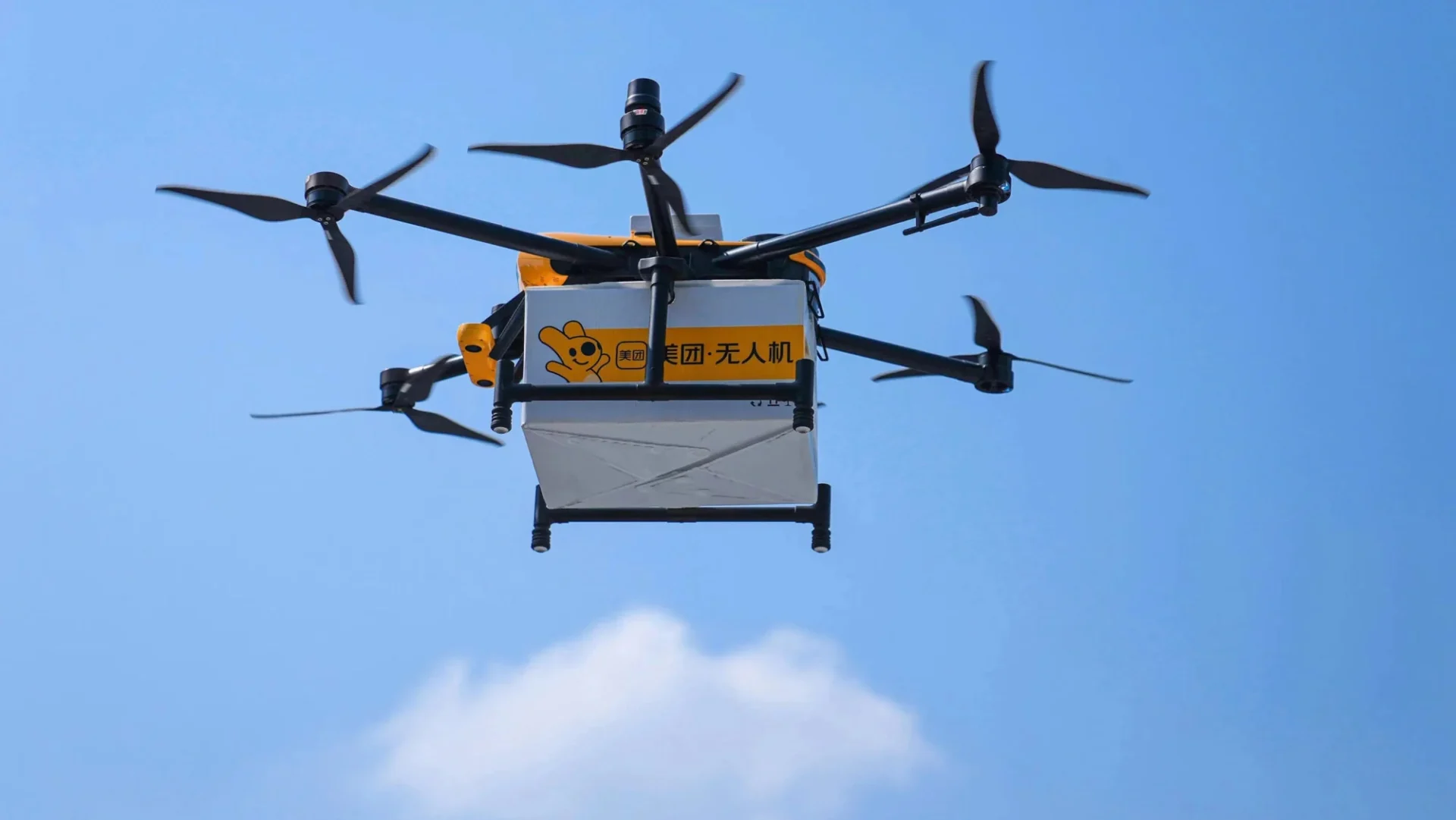In the bustling urban landscape of Shenzhen, nestled amidst towering skyscrapers, a remarkable sight unfolds. A yellow-and-black drone gracefully descends onto a pickup kiosk by the street. The vending-machine-sized kiosk opens, welcoming the drone to land, and a white cardboard box containing a refreshing drink is carefully placed inside.
This remarkable drone delivery service is operated by Meituan, China’s leading food delivery platform. While many big corporations have explored the potential of drone delivery, Meituan stands out by tackling the most challenging environment of dense urban neighborhoods.
In Shenzhen, a city renowned for its mature drone supply chain, Meituan has successfully operated drone deliveries for the past year and a half. To navigate the complexities of a dense city, Meituan employs a unique approach. Instead of delivering directly to customers’ doorsteps, they have strategically placed pickup kiosks near residential and office buildings. Drones drop off multiple packages at these kiosks, streamlining their flight paths and making urban navigation significantly easier.
Meituan’s drone delivery service has gained popularity among Shenzhen residents and vendors, becoming an integral part of their daily routines. Despite some compromises in user experience, Meituan’s progress demonstrates the feasibility of regular drone delivery in cities.
So, how does this magical operation unfold? A visit to one of Meituan’s drone launch pads provides insight. Meituan launches its drones from five delivery hubs in Shenzhen, with one located on the rooftop of a massive shopping mall transformed into an airport for drones and support staff.
The workflow involves a combination of human and automated labor. When an order is received through the drone delivery system, a runner heads to the nearby restaurants to collect the specified items. The food and drinks are then standardized, weighed, and sealed in a cardboard box. Another worker, specializing in drone operations, takes over and ensures the box is securely placed beneath the drone.
From this point onward, the process becomes highly automated. The drones’ movements are controlled by a central algorithm, following predetermined routes. Meituan’s centralized control room allows staff to intervene in emergencies. Currently, over 100 drones are deployed for deliveries in Shenzhen, with one operator monitoring approximately 10 drones at any given time.
Mao Yinian, Meituan’s director of drone delivery services, envisions further automation in the delivery process. Loading packages onto drones and changing their batteries could be tasks handled by robots, minimizing physical strain on human workers.
While technical obstacles for drone deliveries have largely been overcome, the financial viability remains uncertain. According to Jonathan Roberts, a robotics professor, reliable drone delivery is feasible, but its profitability is still difficult to determine.
Regulations play a significant role in shaping the adoption of drone delivery. Australia’s early legislation on unmanned aerial vehicles made it an ideal testing ground, leading companies like Alphabet’s Wing to launch drone deliveries there. Similarly, Meituan found a favorable environment in Shenzhen, where drone manufacturing and government support aligned.
Although safety incidents related to Meituan’s drones have been minimal, building trust among residents is an ongoing process. Demonstrations and educational efforts are essential to assuage concerns about safety.
While some vendors and customers have embraced Meituan’s drone deliveries, wider adoption requires further expansion of vendor availability and pickup kiosks. Meituan aims to make the service more widespread throughout Shenzhen in the next three to five years.
While the sci-fi vision of drones delivering directly to windows may take two to three decades to materialize due to the need for updated urban infrastructure, Meituan remains committed to enhancing customer value and ensuring a user-friendly delivery experience through drones.
In this dynamic landscape, where urban challenges meet technological innovation, Meituan’s drone delivery service offers a glimpse into the future of urban logistics.
READ MORE:
